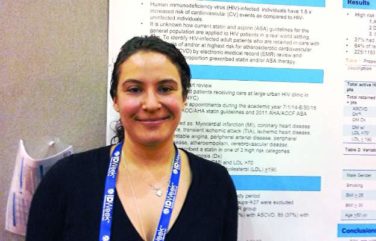AT THE CRITICAL CARE CONGRESS
ORLANDO (FRONTLINE MEDICAL NEWS) – Many patients meeting the criteria for acute respiratory distress syndrome (ARDS) went unrecognized in a global sample of ICU patients, and those ARDS patients did not receive adjusted ventilator management or positioning and pharmacologic adjunctive treatments, based on the results of the LUNG SAFE study.
Enrolling nearly 30,000 patients in 50 countries on five continents, the LUNG SAFE study (Large Observational Study to Understand the Global Impact of Severe Acute Respiratory Failure) looked for real-world answers to whether and how patients with ARDS are treated. The LUNG SAFE results were published concurrently with the presentation of results in a late-breaking session at the Critical Care Congress, sponsored by the Society of Critical Care Medicine (JAMA. 2016;315[8]:759-61). The first author is Dr. Giacomo Bellani , professor of medicine at the University of Milan-Bicocca, Monza, Italy, and Dr. John Laffey, professor of anesthesia, critical care, and physiology at the University of Toronto, presented the results at the meeting.
About 10% of the enrolled patients met ARDS criteria; of those, less than two-thirds received ventilator tidal volumes of 8 mL/kg or less of predicted body weight. Fewer than 18% of patients received positive end–expiratory pressure (PEEP) of more than 12 cm H2O, and clinicians used prone positioning for about 16% of patients with severe ARDS.
Clinicians recognized 60.2% of ARDS cases overall; recognition ranged from 51.3% of the cases of mild ARDS to 78.5% of the severe ARDS cases. For all patients, ARDS was associated with an in-hospital mortality rate of 40%. Nearly half of those with severe ARDS died, as did over a third of those with mild ARDS.
To this end, the LUNG SAFE investigators chose 4 consecutive weeks in the winter to enroll patients from a convenience sample of ICUs that they attempted to make broadly representative. They enrolled during February and March 2014 in the Northern hemisphere and July and August 2014 in the Southern hemisphere, and included all patients 16 years and older who were admitted to a participating ICU and received invasive or noninvasive ventilation.
Enrolled patients received daily evaluation for acute hypoxemic respiratory failure. Patients who met these criteria were then tracked with expanded data collection up to day 28 after respiratory failure was identified, or until ICU discharge or death. Overall, 3,022 patients met the Berlin Definition for ARDS . All but 436 patients (85.4%) received invasive ventilation, and those who did not were excluded from most data analysis.
One unexpected finding, said Dr. Laffey in an interview, was how common ARDS was in this ICU population. “Based on prior studies, we had anticipated finding an incidence of ARDS of approximately half of what we actually found in the LUNG SAFE study. We think that the difference is explained by the fact that we did not rely on clinician recognition of ARDS, but rather collected data directly on each of the Berlin diagnostic criteria, enabling us to make the diagnosis directly.” One possibility is that choosing the winter months for data collection may have resulted in overrepresentation of ARDS.
But Dr. Laffey said that LUNG SAFE’s most surprising finding was the low percentage of clinicians using higher PEEP levels. “It appeared that clinicians used lower-than-expected levels of PEEP, and that the use of PEEP didn’t increase in patients with the more severe forms of ARDS,” he said. “We think we need to increase our efforts to find more reliable ways to diagnose ARDS,” said Dr. Laffey. “While the reasons underlying clinician failure to recognize ARDS in critically ill patients are complex, the fact that there is no single test for diagnosing ARDS is a likely contributing factor.”
“This finding likely reflects the lack of a clear evidence base for the effectiveness of higher levels of PEEP in patients with ARDS” said Dr. Laffey. “It emphasizes the need for additional research to answer this and other important questions relating to the optimal treatment of patients with ARDS.”
However, if physicians did recognize ARDS, then they were more likely to use higher PEEPs (mean 8.9 cm H2O vs. 7.5 cm H2O for nonrecognized ARDS; P less than .001), prone positioning, and neuromuscular blockade (43.9% adjunctive treatment vs. 21.7% adjunctive treatment for nonrecognized ARDS; P less than .001), though they didn’t adjust the breath size used in ventilation.
In multivariable analysis, factors that made it more likely that ARDS would be recognized were higher nurse-to-patient and physician-to-patient ratios, younger patient age, lower Pa02/Fi02 ratios, and a pneumonia or pancreatitis diagnosis. Patients without an identified risk factor, and those with heart failure, were less likely to be diagnosed with ARDS.
The study was supported by the European Society of Intensive Care Medicine, by St. Michael’s Hospital, Toronto, and by the University of Milan-Bicocca, Monza, Italy. The authors reported no conflicts of interest.
On Twitter @karioakes





